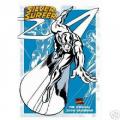If Honda specify a 10W30 or 10W40 'engine' oil, why would you put a 75/80 ,transmission' oil in?
The LSD for the pre 1995 M/T [5 speed] plus all years A/T compared to the 1995 on M/T [both 5 and 6 speeds] are very similar; the sun wheels are an enclosed set and are sandwiched between two clutch packs in the diff case, all lubricated by the gearbox oil. The later M/Ts have less plates/clutches in the sandwich but have in-lieu thrust races against the case itself. So whether the sun wheels have a 'torsen' style helical twist or not, the diff is relying on these 'wet' clutch packs to lock the diff.
My assumption being that as the diff spins the oil/ clutches heat and then lock, in a similar fashion to the steel on steel expansion of bellville washers in a Salisbury style 'Powr-Loc' LSD.
As Honda specify the gearbox and hence diff oil as 10/30 or 10W/40 'engine' oil, as opposed to [say] Castrol LS or B373, the plates/clutches have presumably been so engineered and optimised. A different grade or style of oil, or oil additives will surely alter the bite character of the diff.
So......10W30 or 10W40 SF or SG grade every 2 years......





 Reply With Quote
Reply With Quote



 No more NA
No more NA


